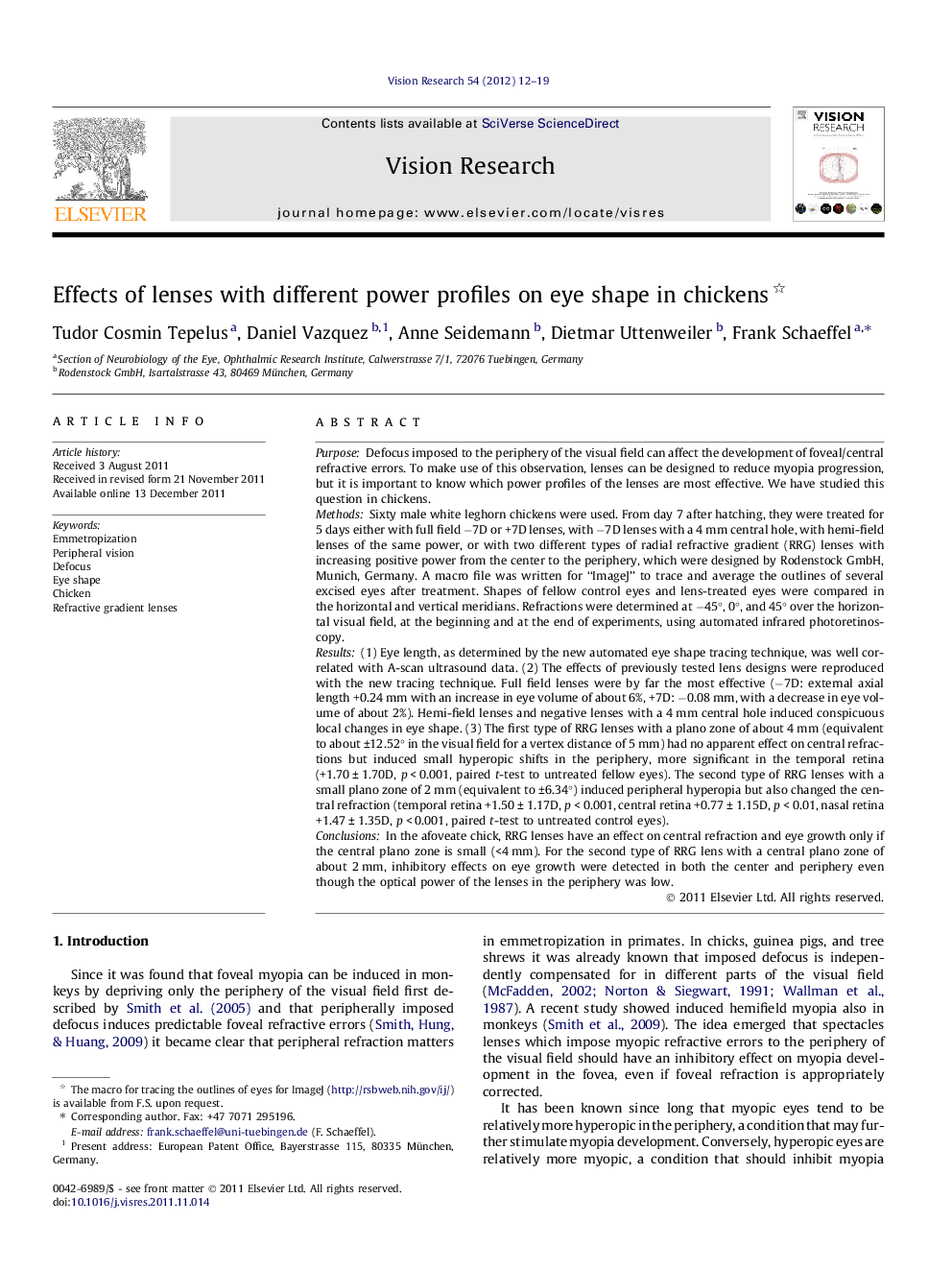| Article ID | Journal | Published Year | Pages | File Type |
|---|---|---|---|---|
| 6203723 | Vision Research | 2012 | 8 Pages |
PurposeDefocus imposed to the periphery of the visual field can affect the development of foveal/central refractive errors. To make use of this observation, lenses can be designed to reduce myopia progression, but it is important to know which power profiles of the lenses are most effective. We have studied this question in chickens.MethodsSixty male white leghorn chickens were used. From day 7 after hatching, they were treated for 5 days either with full field â7D or +7D lenses, with â7D lenses with a 4 mm central hole, with hemi-field lenses of the same power, or with two different types of radial refractive gradient (RRG) lenses with increasing positive power from the center to the periphery, which were designed by Rodenstock GmbH, Munich, Germany. A macro file was written for “ImageJ” to trace and average the outlines of several excised eyes after treatment. Shapes of fellow control eyes and lens-treated eyes were compared in the horizontal and vertical meridians. Refractions were determined at â45°, 0°, and 45° over the horizontal visual field, at the beginning and at the end of experiments, using automated infrared photoretinoscopy.Results(1) Eye length, as determined by the new automated eye shape tracing technique, was well correlated with A-scan ultrasound data. (2) The effects of previously tested lens designs were reproduced with the new tracing technique. Full field lenses were by far the most effective (â7D: external axial length +0.24 mm with an increase in eye volume of about 6%, +7D: â0.08 mm, with a decrease in eye volume of about 2%). Hemi-field lenses and negative lenses with a 4 mm central hole induced conspicuous local changes in eye shape. (3) The first type of RRG lenses with a plano zone of about 4 mm (equivalent to about ±12.52° in the visual field for a vertex distance of 5 mm) had no apparent effect on central refractions but induced small hyperopic shifts in the periphery, more significant in the temporal retina (+1.70 ± 1.70D, p < 0.001, paired t-test to untreated fellow eyes). The second type of RRG lenses with a small plano zone of 2 mm (equivalent to ±6.34°) induced peripheral hyperopia but also changed the central refraction (temporal retina +1.50 ± 1.17D, p < 0.001, central retina +0.77 ± 1.15D, p < 0.01, nasal retina +1.47 ± 1.35D, p < 0.001, paired t-test to untreated control eyes).ConclusionsIn the afoveate chick, RRG lenses have an effect on central refraction and eye growth only if the central plano zone is small (<4 mm). For the second type of RRG lens with a central plano zone of about 2 mm, inhibitory effects on eye growth were detected in both the center and periphery even though the optical power of the lenses in the periphery was low.
⺠It is important to find out which refractive gradient lenses can inhibit myopia most effectively. ⺠We studied this question in the chicken model. ⺠Eye shapes were measured after treatment with novel radial refractive gradient lenses. ⺠On-axis, the chick eye is not responsive when the central plano zone is large. ⺠Even small amounts of peripheral defocus change eye shapes in the chick.
